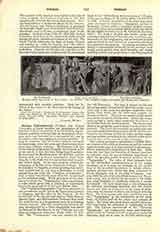

Cosmas Indicopleustes (COSMAS THE INDIAN VOYAGER), a Greek traveler and geographer of the first half of the sixth century, b. at Alexandria, Egypt. Cosmas probably received only an elementary education, as he was intended for a mercantile life, and in his earlier years was engaged in business pursuits. It may be, however, that by further study he increased his knowledge, since his notes and observations show more than ordinary training. His business took him to the regions lying south of Egypt, the farthest point of his travels in this direction being Cape Guardafui. He traversed the Mediterranean, the Red Sea, and the Persian Gulf, and gathered information about lands lying far to the East; but it is not certain that he actually visited India. In his later years he entered the monastery of Raithu on the Peninsula of Sinai. If it be necessary to suppose, as some investigators assert, that Cosmas was at any time a Nestorian, it would appear from his work, the “Christian Topography”, that, at least towards the close of his life, he returned to the orthodox faith. While an inmate of the monastery he wrote the “Topography” above mentioned, a work which gives him a position of importance among the geographers of the early Middle Ages.
The “Christian Topography” has been preserved in two manuscript copies, one in the Laurentian Library at Florence, and the other in the Vatican. In the second half of the seventeenth century Isaac Vossius, Emeric Bigot, and Melchisedech Thevenot first made the work known by publishing extracts from it. The first complete and critical edition, accompanied by a Latin translation, was issued by Bernard de Montfaucon in his “Collectio nova patrum et scriptorum graecorum (Paris, 1707). The “Topography” was also printed by Galandi.
OTTO HARTIG

